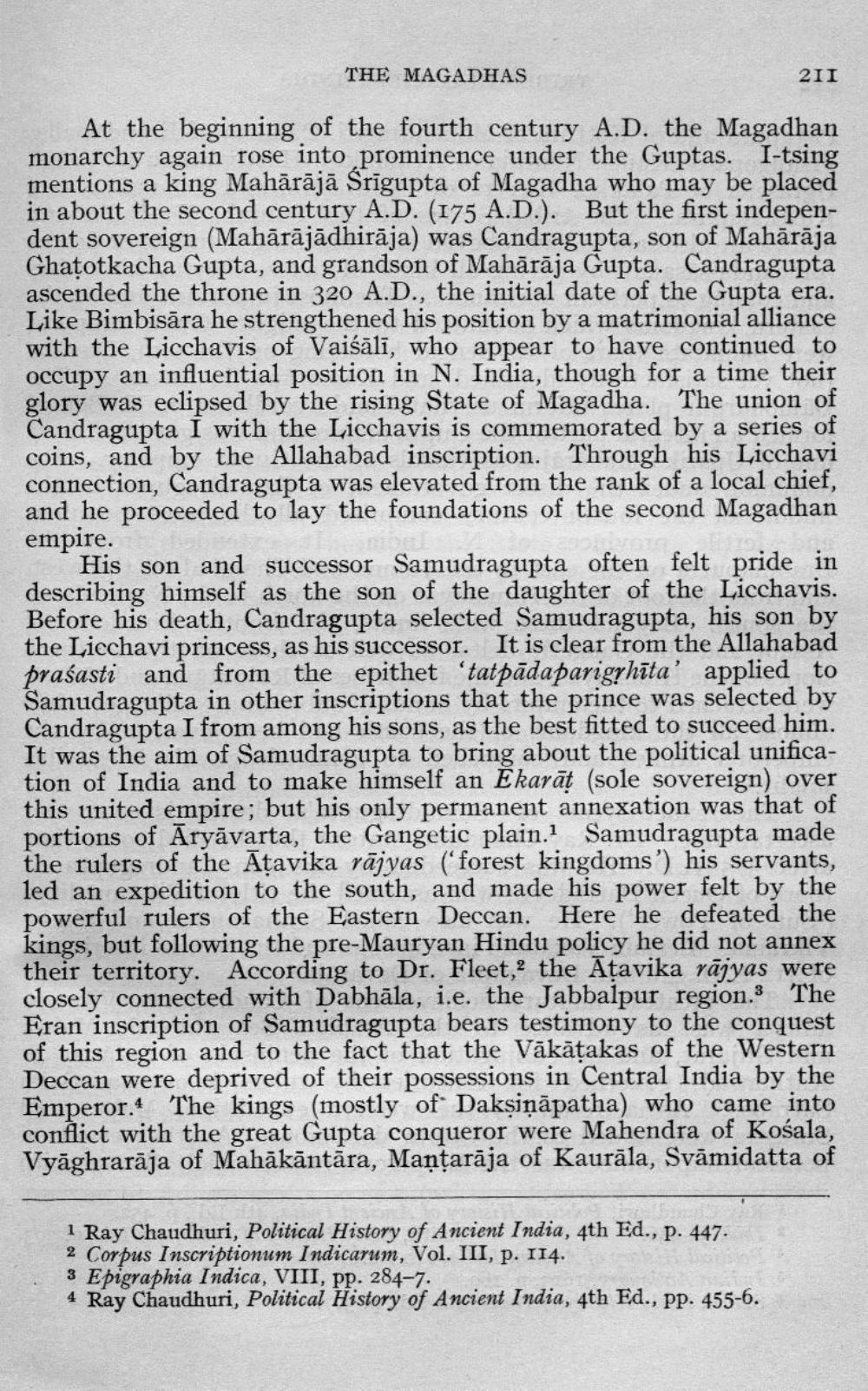________________
THE MAGADHAS
211
At the beginning of the fourth century A.D. the Magadhan monarchy again rose into prominence under the Guptas. I-tsing mentions a king Mahārājā Srigupta of Magadha who may be placed in about the second century A.D. (175 A.D.). But the first independent sovereign (Mahārājādhirāja) was Candragupta, son of Mahārāja Ghatotkacha Gupta, and grandson of Mahārāja Gupta. Candragupta ascended the throne in 320 A.D., the initial date of the Gupta era. Like Bimbisāra he strengthened his position by a matrimonial alliance with the Licchavis of Vaiśālī, who appear to have continued to occupy an influential position in N. India, though for a time their glory was eclipsed by the rising State of Magadha. The union of Candragupta I with the Licchavis is commemorated by a series of coins, and by the Allahabad inscription. Through his Licchavi connection, Candragupta was elevated from the rank of a local chief, and he proceeded to lay the foundations of the second Magadhan empire.
His son and successor Samudragupta often felt pride in describing himself as the son of the daughter of the Licchavis. Before his death, Candragupta selected Samudragupta, his son by the Licchavi princess, as his successor. It is clear from the Allahabad praśasti and from the epithet ‘tatpādaparigrhīta' applied to Samudragupta in other inscriptions that the prince was selected by Candragupta I from among his sons, as the best fitted to succeed him. It was the aim of Samudragupta to bring about the political unification of India and to make himself an Ekarāt (sole sovereign) over this united empire; but his only permanent annexation was that of portions of Aryāvarta, the Gangetic plain.1 Samudragupta made the rulers of the Ātavika rājyas ('forest kingdoms') his servants, led an expedition to the south, and made his power felt by the powerful rulers of the Eastern Deccan. Here he defeated the kings, but following the pre-Mauryan Hindu policy he did not annex their territory. According to Dr. Fleet 2 the Ātavika rājyas were closely connected with Dabhāla, i.e. the Jabbalpur region. The Eran inscription of Samudragupta bears testimony to the conquest of this region and to the fact that the Vākāțakas of the Western Deccan were deprived of their possessions in Central India by the Emperor.4 The kings (mostly of Daksiņāpatha) who came into conflict with the great Gupta conqueror were Mahendra of Kośala, Vyāghrarāja of Mahākāntāra, Mantarāja of Kaurāla, Svāmidatta of
1 Ray Chaudhuri, Political History of Ancient India, 4th Ed., p. 447. 2 Corpus Inscriptionum Indicarum, Vol. III, p. 114. 3 Epigraphia Indica, VIII, pp. 284-7. 4 Ray Chaudhuri, Political History of Ancient India, 4th Ed., pp. 455-6.




